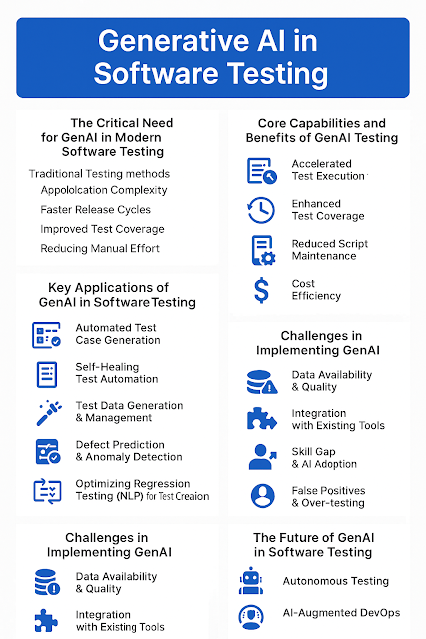After years of working on high-scale automation and quality engineering projects, I decided to build something that tackles this challenge head-on:
👉 A Universal API Testing Tool powered by automation, combinatorial logic, and schema intelligence.
This tool is designed not just for test engineers — but for anyone who wants to bulletproof their APIs and catch critical bugs before they reach production.
🔍 The Problem with Manual API Testing
Let’s face it: manual API testing, or even scripted testing with fixed payloads, leaves massive blind spots. Here’s what I’ve consistently seen across projects:
🔁 Happy path bias: Most tests cover only expected (ideal) scenarios.
❌ Boundary and edge cases are rarely tested thoroughly.
🧱 Schema mismatches account for over 60% of integration failures.
🔄 Complex, nested JSON responses break traditional test logic.
Even with the best intentions, manual testing only touches ~15% of real-world possibilities. The rest? They’re left to chance — and chance has a high failure rate in production.
💡 Enter: The Universal API Testing Tool
This tool was created to turn a single API request + sample response into a powerful battery of intelligent, automated test cases. And it does this without relying on manually authored test scripts.
Let’s break down its four core pillars:
🔁 1. Auto-Schema Derivation
Goal: Ensure every response conforms to an expected structure — even when you didn’t write the schema.
Parses sample responses and infers schema rules dynamically
Detects type mismatches, missing fields, and violations of constraints
Supports deeply nested objects, arrays, and edge data structures
Validates responses against actual usage, not just formal docs
🔧 Think of it like “JSON Schema meets runtime intelligence.”
🧪 2. Combinatorial Test Generation
Goal: Generate hundreds of valid and invalid test cases automatically from a single endpoint.
Creates diverse combinations of optional/required fields
Performs boundary testing using real-world data types
Generates edge case payloads with minimal human input
Helps you shift-left testing without writing 100 test cases by hand
📈 This is where real coverage is achieved — not through effort, but through automation.
📜 3. Real-Time JSON Logging
Goal: Provide debuggable, structured insights into each request/response pair.
Captures and logs full payloads with status codes, headers, and durations
Classifies errors by type: schema, performance, auth, timeout, etc.
Fully CI/CD compatible — ready for pipeline integration
🧩 Imagine instantly knowing which combination failed, why it failed, and what payload triggered it.
🔐 4. Advanced Security Testing
Goal: Scan APIs for common and high-risk vulnerabilities without writing separate security scripts.
Built-in detection for:
XSS, SQL Injection, Command Injection
Path Traversal, Authentication Bypass
Regex-based scans for sensitive patterns (UUIDs, tokens, emails)
Flags anomalies early during development or staging
🛡️ You don’t need a separate security audit to find the obvious vulnerabilities anymore.
⚙️ How It Works (Under the Hood)
Developed in Python, using robust schema libraries and custom validation logic
Accepts a simple cURL command or Postman export as input
Automatically generates:
Schema validators
Test payloads
Execution reports
Debug mode shows complete request/response cycles for every test case
📈 What You Can Expect
The tool is in developer preview stage — meaning results will vary based on use case — but here’s what early adopters and dev teams can expect:
⏱️ Save 70–80% of manual testing time
🐞 Catch 2–3x more bugs by testing combinations humans often miss
⚡ Reduce integration testing time from days to hours
🔒 Get built-in security scans with every API run — no extra work required
🧰 Try It Yourself
🔗 GitHub Repository
👉 github.com/nsharmapunjab/frameworks_and_tools/tree/main/apitester
💬 Your Turn: What’s Your Biggest API Testing Challenge?
I’m actively working on v2 of this tool — with plugin support, OpenAPI integration, and enhanced reporting. But I want to build what developers and testers actually need.
So tell me:
➡️ What’s the most frustrating part of API testing in your projects?
Drop a comment or DM me. I’d love to learn from your use cases.
👋 Work With Me
Need help building test automation frameworks, prepping for QA interviews, or implementing CI/CD quality gates?
📞 Book a 1:1 consultation: 👉 topmate.io/nitin_sharma53
Thanks for reading — and if you found this useful, share it with your dev or QA team. Let’s raise the bar for API quality, together.
#APITesting #AutomationEngineering #QualityAssurance #DevOps #OpenSource #TestAutomation #PythonTools #API #SDET #NitinSharmaTools










